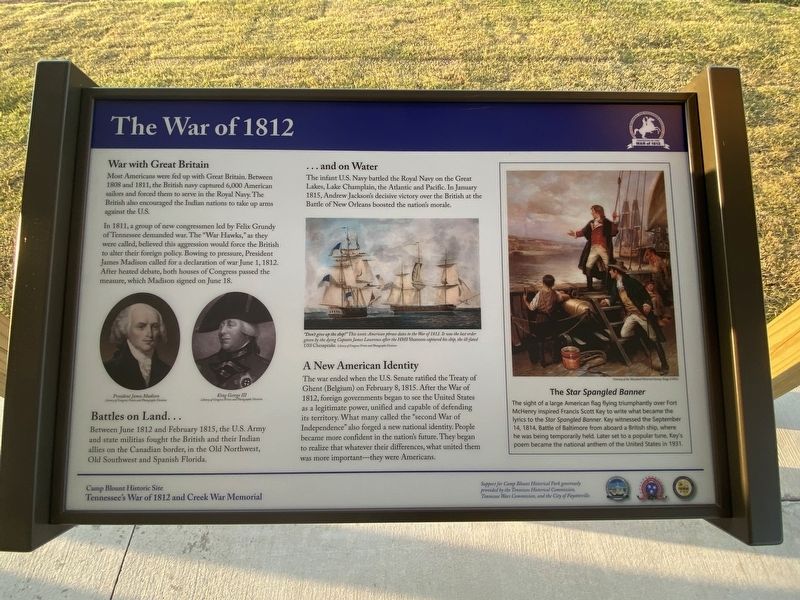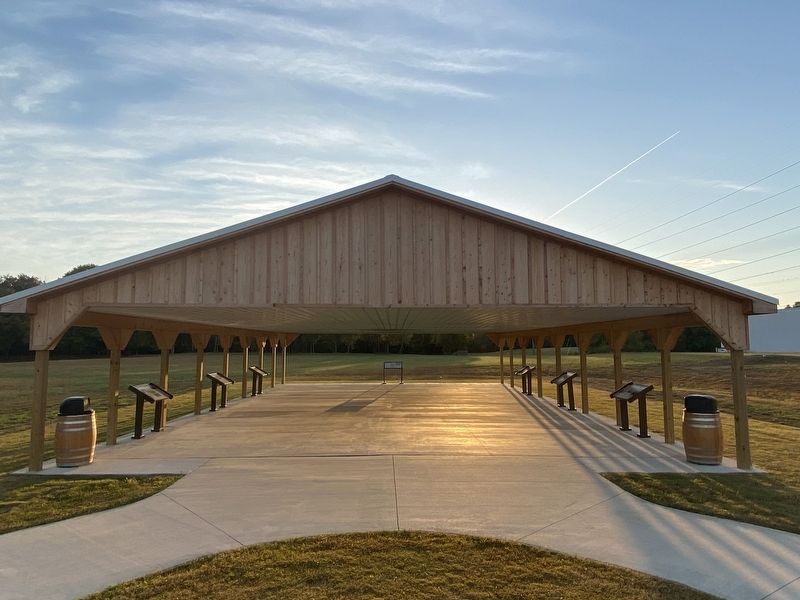Fayetteville in Lincoln County, Tennessee — The American South (East South Central)
The War of 1812
In 1811, a group of new congressmen led by Felix Grundy of Tennessee demanded war. The "War Hawks,” as they were called, believed this aggression would force the British to alter their foreign policy. Bowing to pressure, President James Madison called for a declaration of war June 1, 1812. After heated debate, both houses of Congress passed the measure, which Madison signed on June 18.
Battles on Land... Between June 1812 and February 1815, the U.S. Army and state militias fought the British and their Indian allies on the Canadian border, in the Old Northwest, Old Southwest and Spanish Florida.
... and on Water The infant U.S. Navy battled the Royal Navy on the Great Lakes, Lake Champlain, the Atlantic and Pacific. In January 1815, Andrew Jackson's decisive victory over the British at the Battle of New Orleans boosted the nation's morale.
A New American Identity
The war ended when the U.S. Senate ratified the Treaty of Ghent (Belgium) on February 8, 1815. After the War of 1812, foreign governments began to see the United States as a legitimate power, unified and capable of defending its territory. What many called the "second War of Independence” also forged a new national identity. People became more confident in the nation's future. They began to realize that whatever their differences, what united them was more important--they were Americans.
The Star Spangled Banner
The sight of a large American flag fying triumphantly over Fort McHenry inspired Francis Scott Key to write what became the lyrics to the Star Spangled Banner. Key witnessed the September 14, 1814, Battle of Baltimore from aboard a ship, where he was being temporarily held. Later set to a popular tune, Key's poem became the national anthem of the United States in 1931.
Topics. This historical marker is listed in this topic list: War of 1812. A significant historical year for this entry is 1812.
Location. 35° 8.427′ N, 86° 33.984′ W. Marker is in Fayetteville, Tennessee, in Lincoln County. Marker can be reached from U.S. 231. Touch for map. Marker is at or near this postal address: 1371 US-231, Fayetteville TN 37334, United States of America. Touch for directions.
Other nearby markers. At least 8 other markers are within walking distance of this marker. Preserving Camp Blount (a few steps from this marker); President Andrew Jackson (a few steps from this marker); The Wars of the Old Southwest (a few steps from this marker); The Creek War (a few steps from this marker); Camp Blount & the "Tennessee Volunteers" (a few steps from this marker); In the National Spotlight (within shouting distance of this marker); Andrew Jackson (within shouting distance of this marker); About the Sculpture / About the Artist (within shouting distance of this marker). Touch for a list and map of all markers in Fayetteville.
Credits. This page was last revised on October 21, 2022. It was originally submitted on October 15, 2022, by Darren Jefferson Clay of Duluth, Georgia. This page has been viewed 67 times since then and 11 times this year. Photos: 1. submitted on October 16, 2022, by Darren Jefferson Clay of Duluth, Georgia. 2. submitted on October 17, 2022, by Darren Jefferson Clay of Duluth, Georgia. • Bill Pfingsten was the editor who published this page.

